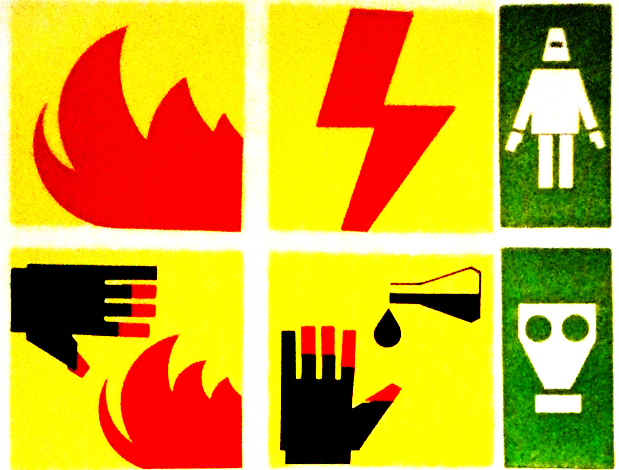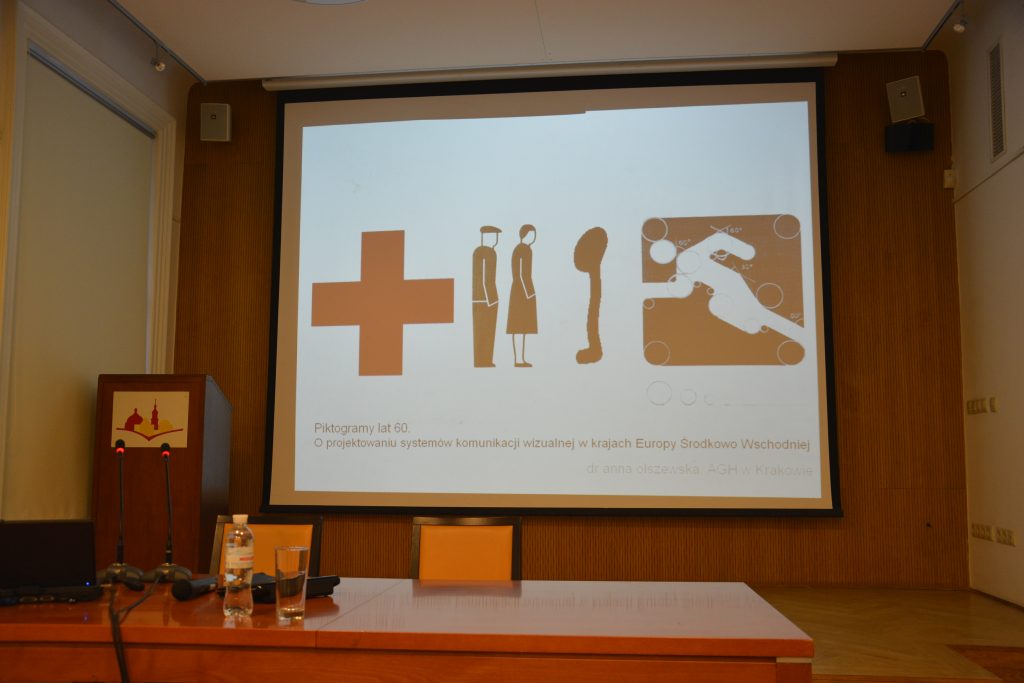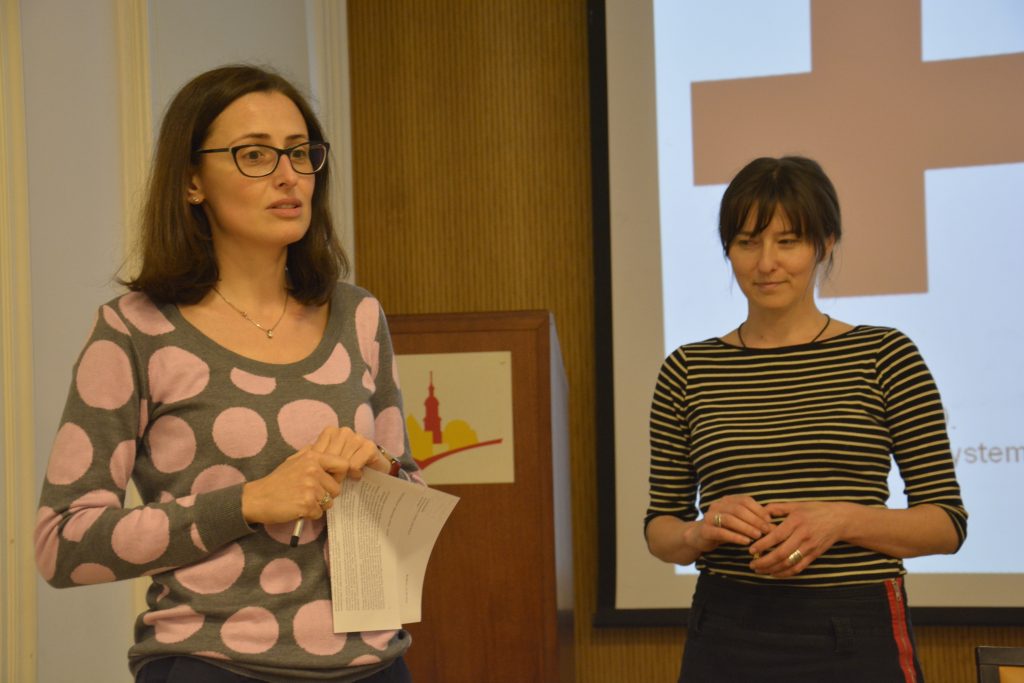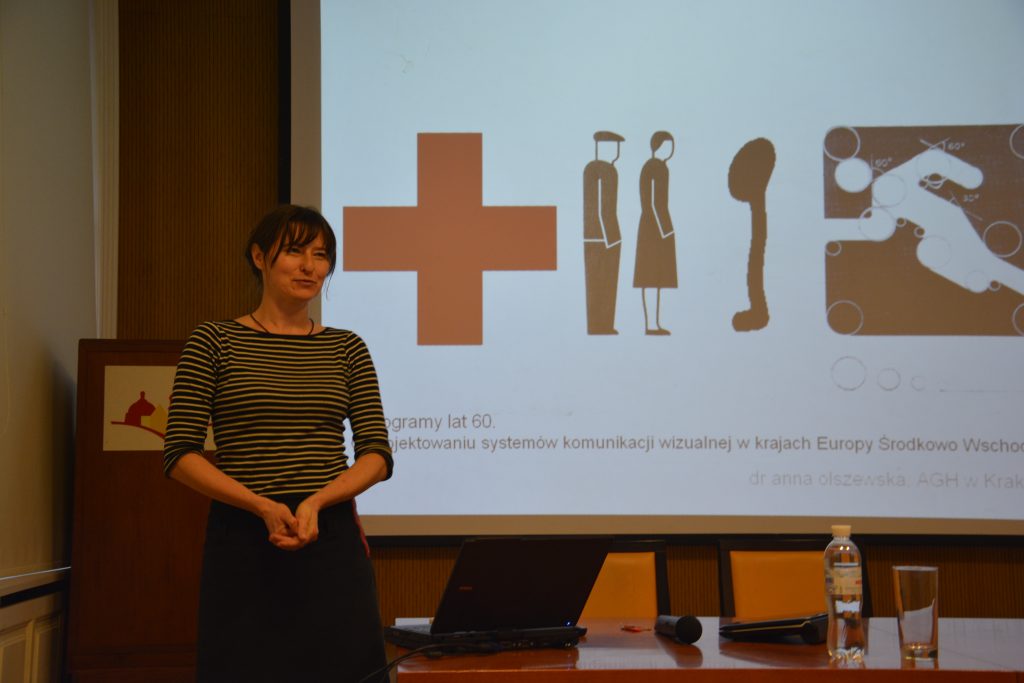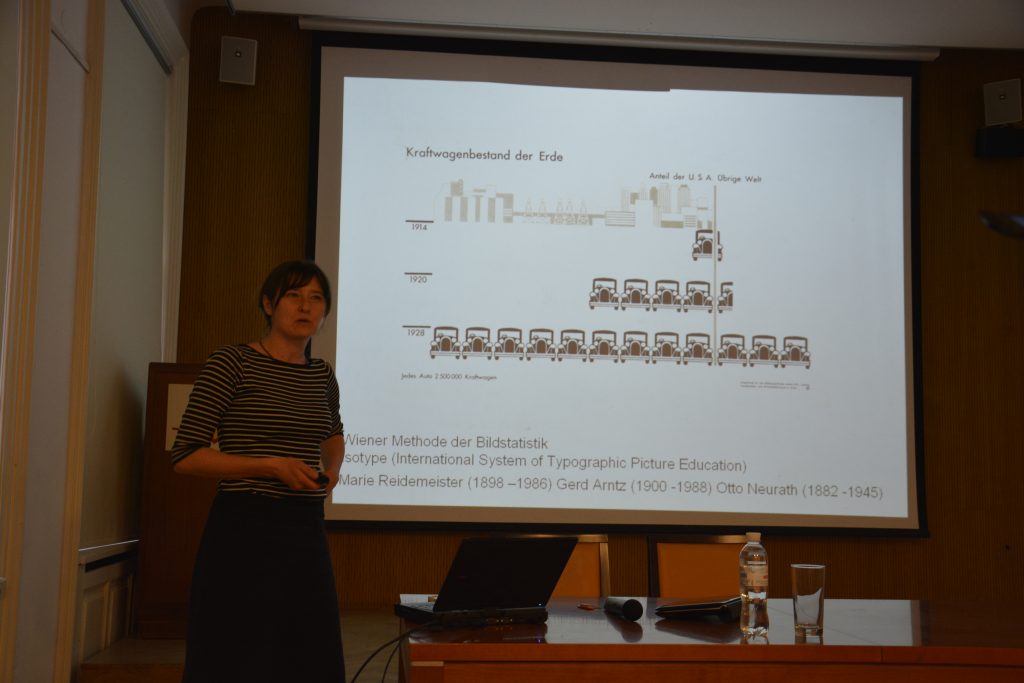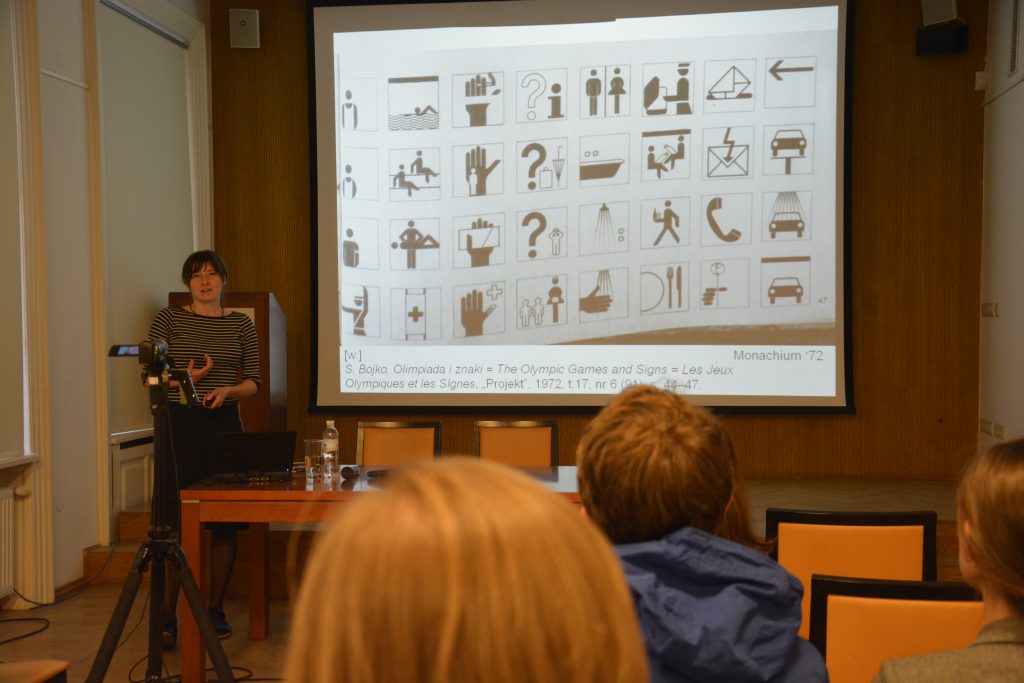Pictograms after 1960': designing visual communication systems in Central and Eastern European countries
May 7, 2015
Center for Urban History, Lviv
Can we trace the cultural differences by looking at the pictograms ?
Construction of artificial visual communication systems had been placed on the top of the graphic designer’s schedule in the second half of 60'. The Olympic Games Committees’ as well as the Icograda's efforts were good examples of that day tendency toward re-establishing the global standards of visual communication especially in relation to public transportation systems, signs helping the man in journey in the Western European countries. At the same time the Eastern Bloc Countries designers focused on the pictograms and symbol systems in relation to human-machine communication, safety regulations and social statistics, often applying local design methods and aesthetics onto their projects.
Lecture was held in Polish.
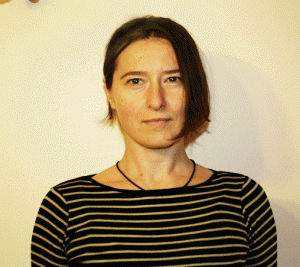
Dr. Anna Olszewska
assistant professor at AGH University of Science and Technology (Krakow, Poland). Has a background in Arts and Humanities. She works in the visual studies areas of document analysis, print history, history of science and curatorship (The Print Room of Polish Academy of Arts and Sciences since 2007- as well as the Faculty of Humanities at The University of Science and Technology in Krakow since 2008 – ). She holds a PhD in Art History (The Jagiellonian University, Krakow, 2006), and MA in Art History and Religious Studies. Experienced at curating exhibitions in the field of history of science.
